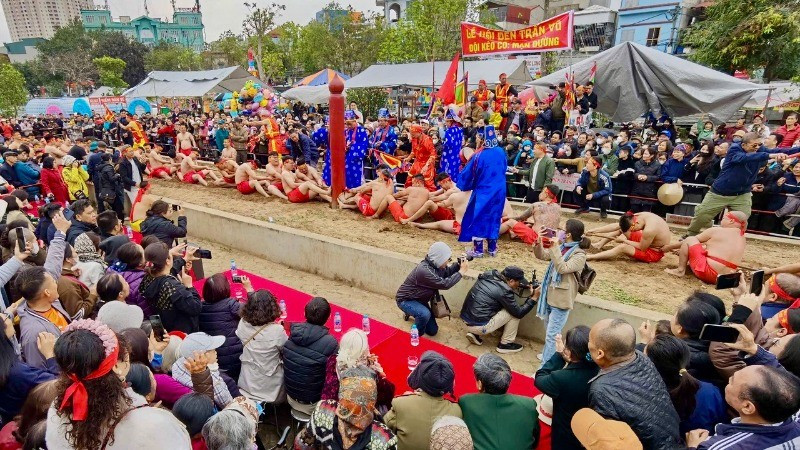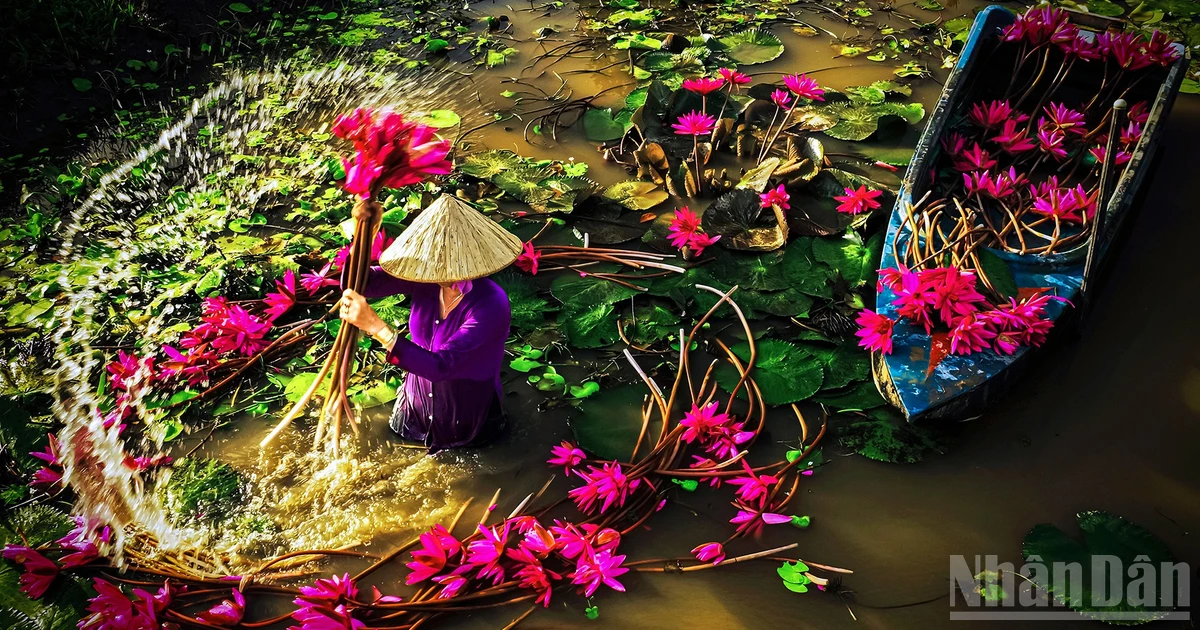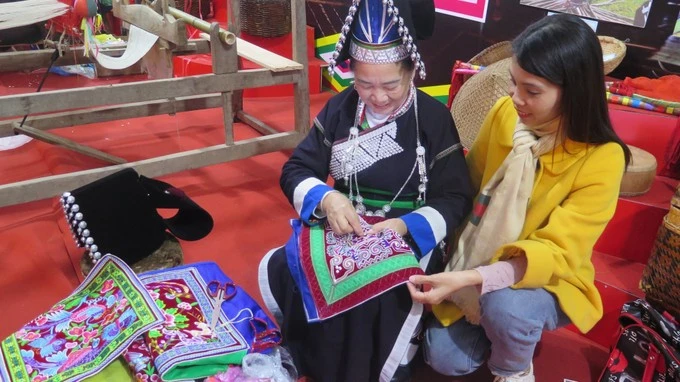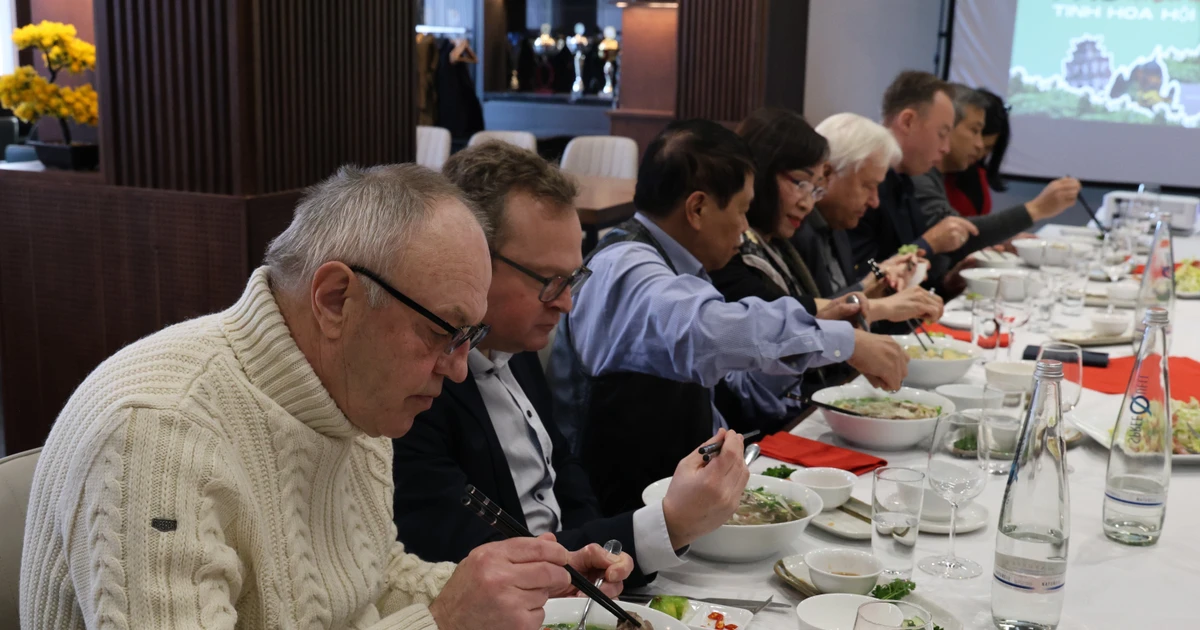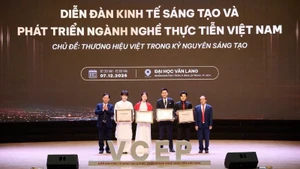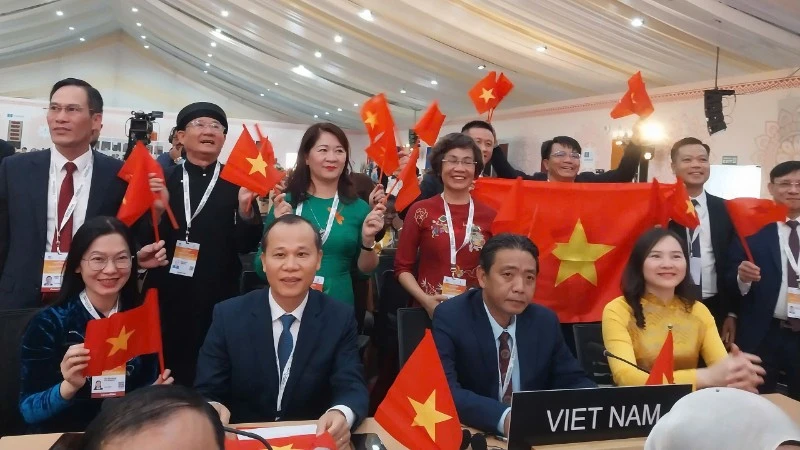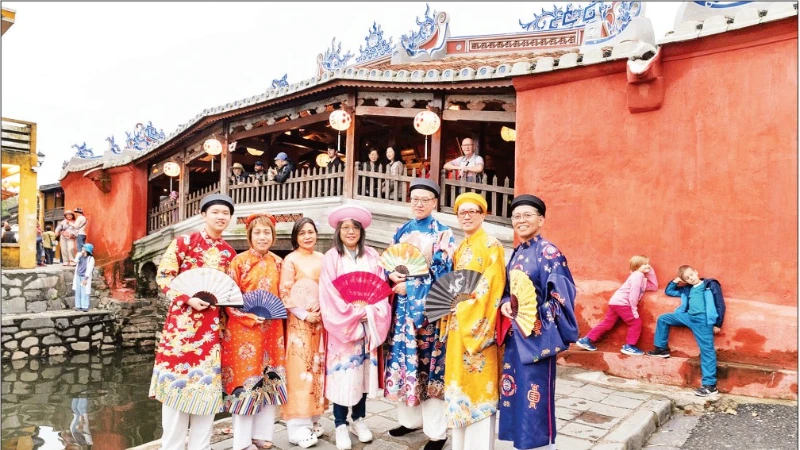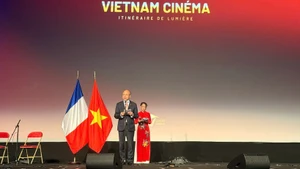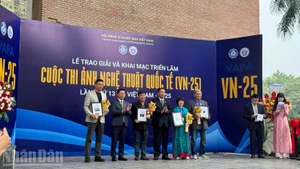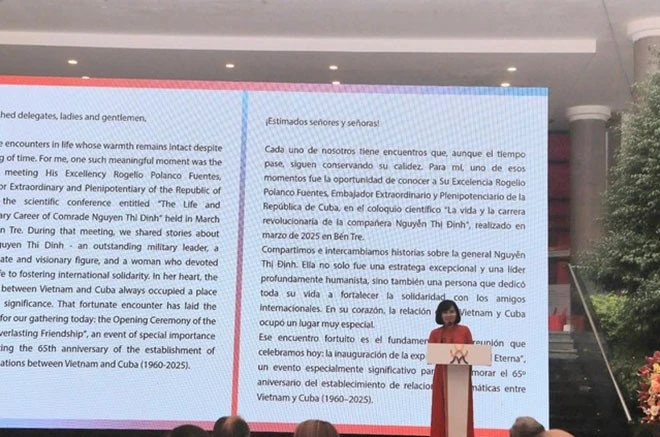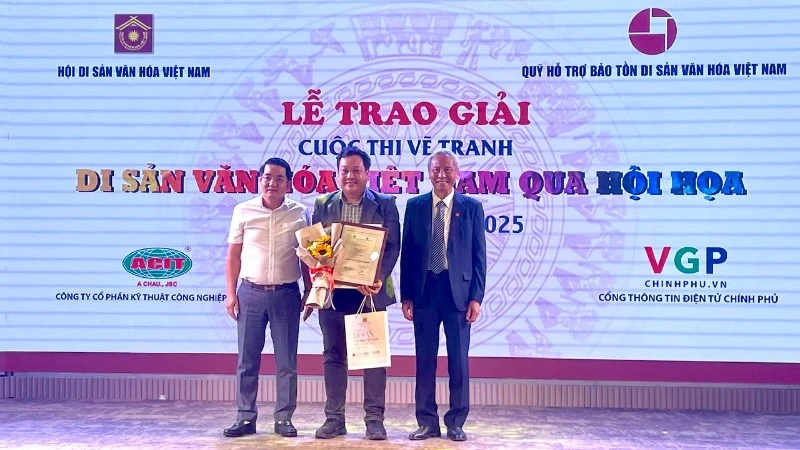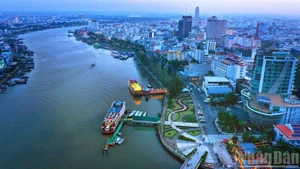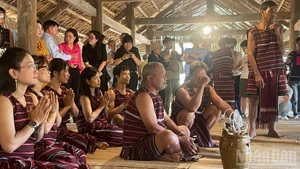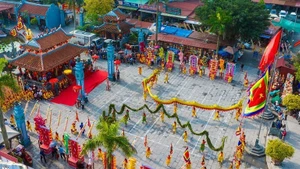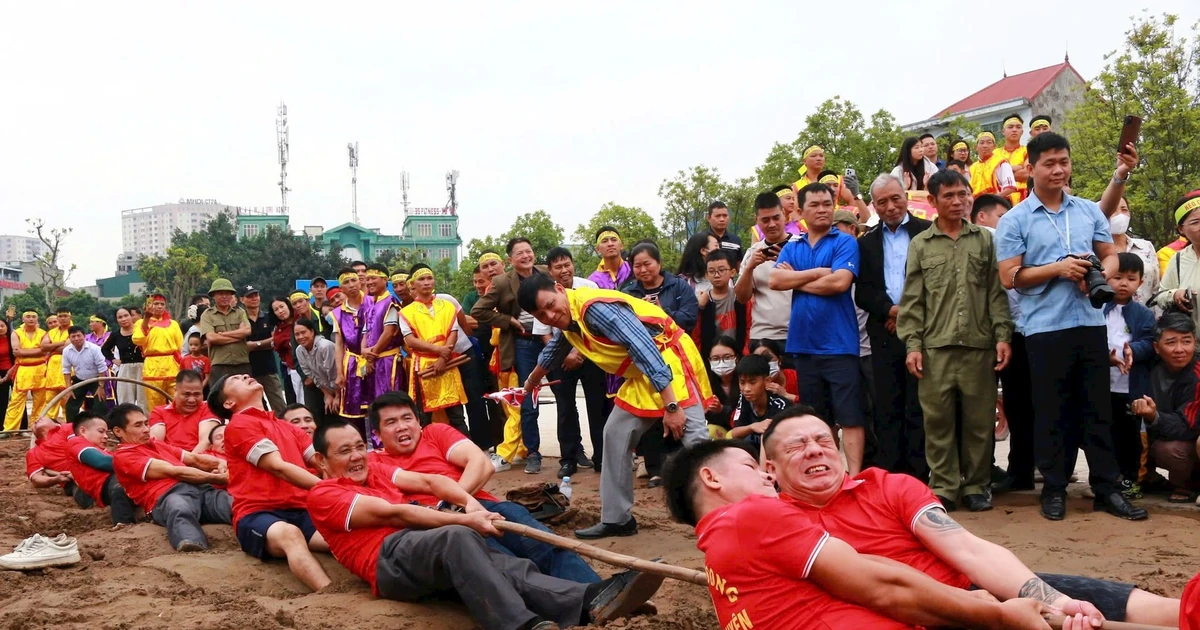A rich cultural resource
Created and passed down through generations by the people, traditional games and performances form an important part of Vietnam’s intangible cultural heritage. These folk heritages act as threads that bind communities together and reflect the unique cultural imprints of each region. With 54 ethnic groups, Vietnam boasts a rich and diverse treasure trove of folk games and performances, ranging from cockfighting, seated tug-of-war, and water puppetry in the north; blindfolded clay pot smashing and Bai Choi singing in the central region; to khang playing, blindfolded goat catching, and Hat Boi (classical theatre) in the south.
Ao Dai performance on Nguyen Hue Street within the framework of the 11th City Ao Dai Festival, 2025. (Photo courtesy)
According to the Vietnam Institute for Tourism Development Research, the Red River Delta alone has around 60 popular traditional games and performances. Experts suggest that with the right approach, these “cultural specialities” could become valuable resources for developing unique tourism products, enhancing the visitor experience, reinforcing destination appeal, and preserving and spreading traditional cultural values.
In recent years, some characteristic local games and performances have been incorporated into tourism offerings. In Hoi An, Bai Choi singing and blindfolded pot smashing have become popular cultural experiences among visitors. In Hanoi, water puppetry is considered a must-see activity for international tourists, while the pedestrian streets around Hoan Kiem Lake offer spaces for the public and tourists to engage in games such as tug-of-war, o an quan (a traditional Vietnamese game), and skipping rope. In Dong Nai, activities like tug-of-war and stilt walking have been cleverly integrated into outdoor tourism programmes for companies and schools.
With the right approach, these “cultural specialities” could become valuable resources for developing unique tourism products.
However, the tourism potential of Vietnam’s traditional folk games and performances remains underutilised. According to MSc Nguyen Thuy Van from the Vietnam Institute for Tourism Development Research, most provinces and cities have not comprehensively and accurately catalogued their local folk games and performances. Moreover, there is a significant gap in promoting these heritages.
At tourism fairs, exhibitions, and major promotional events, information on traditional games and performances is rarely featured by localities. Travel agencies' cultural tourism offerings focus on festivals, historical sites, and scenic landscapes. Additionally, despite the diversity of folk games, many are duplicated across regions or only performed during festivals or special occasions, making them difficult to include in regular tour itineraries.
Professionalisation in organising folk games and performances
Not all folk games and performances are suitable for tourism. According to MSc Nguyen Thuy Van, local authorities and destinations should conduct thorough inventories of traditional games and performances in their areas. From this, they can select those with tourism potential based on cultural, historical, humanistic, aesthetic, and entertainment values; logistical feasibility; support from authorities, businesses, and local communities; and safety and sustainability.
From there, it is crucial to foster partnerships with travel companies to design appropriate programmes. These may include themed tours focused on experiencing folk games and performances or integrating them into cultural and rural tourism tours. Local community involvement should be encouraged, along with stronger inter-regional cooperation to develop unique tourism routes.
Dr Le Thi Minh Ly, Vice President of the Vietnam Cultural Heritage Association, emphasises the need to identify and catalogue local games and performances to filter out foreign influences and pinpoint those emblematic of each destination. This helps avoid redundancy in tourism development. Achieving this requires the active participation of both local authorities and communities. Additionally, simply bringing tourists to venues where these games and performances occur is not enough. Professional, curated programmes are needed to interpret their values and significance and, more importantly, to offer interactive and participatory tourist experiences.
When visitors from different regions and backgrounds come together through shared cultural expressions, they form stronger connections to the places they visit.
Phung Quang Thang, Executive Vice President of the Vietnam Society of Travel Agents, also believes that creative approaches are essential to conveying cultural messages and transforming folk games and performances into tourism products and services.
According to research by the Vietnam Institute for Tourism Development Research, countries like the Republic of Korea have successfully turned folk games such as seesawing and traditional wrestling into tourism attractions. This success stems in part from government policies that support these efforts, including designating traditional games and their venues for tourist engagement, and funding local communities to organise festivals and exhibitions.
In Indonesia, traditional games and performances such as sepak takraw and shadow puppetry have become cultural highlights through coordinated efforts between cultural organisations, tourism boards, and local communities. These initiatives are promoted through festivals, exhibitions, and performance spaces. The Indonesian government also provides funding to support cultural preservation through performance events. These are valuable lessons Vietnam can learn from to turn the potential of folk games and performances into a distinctive tourism resource.
